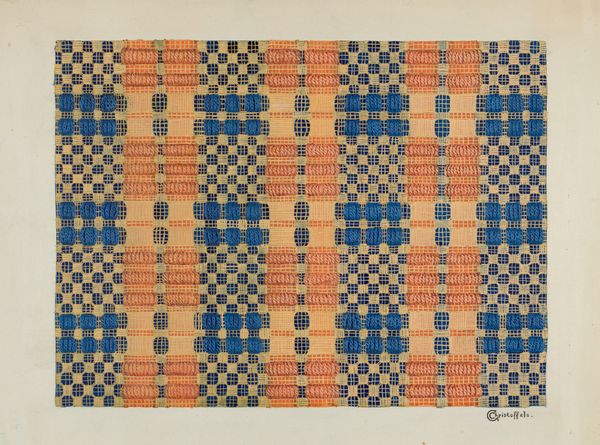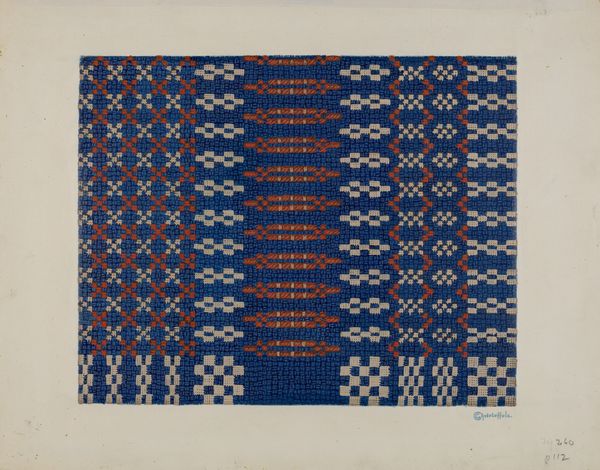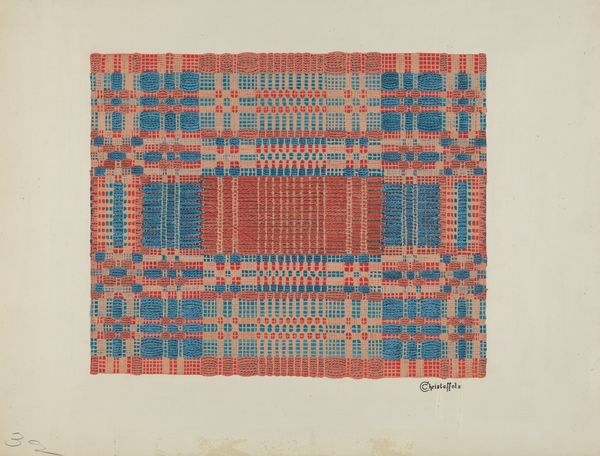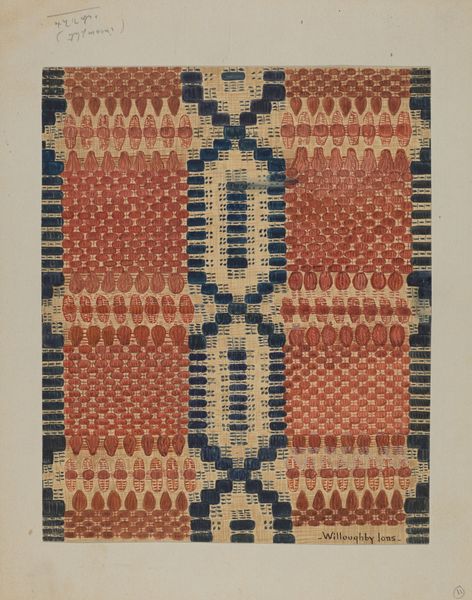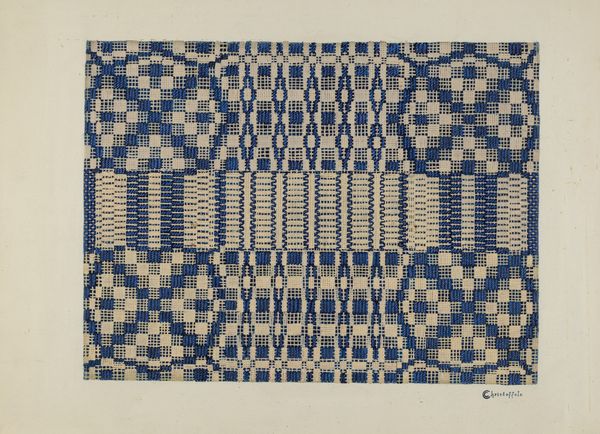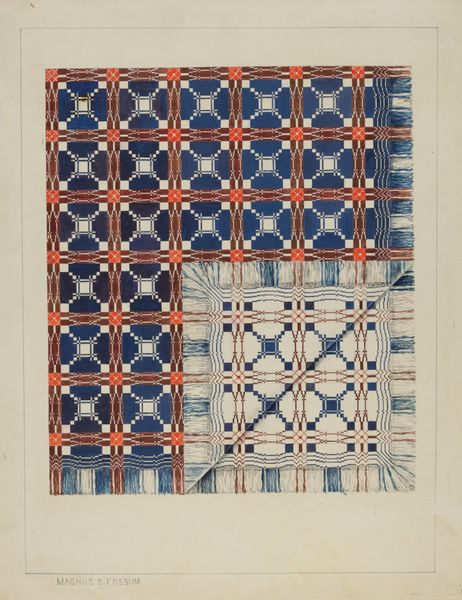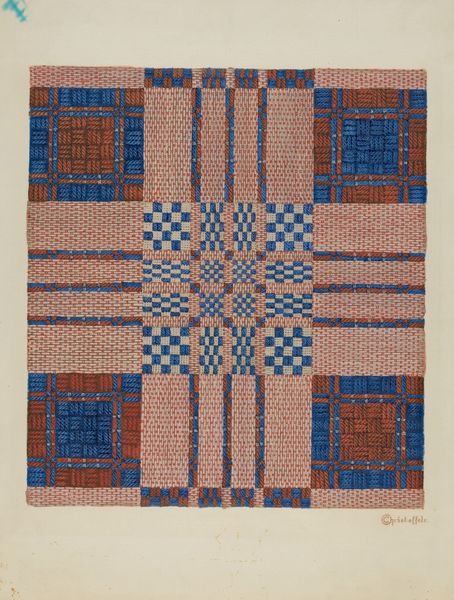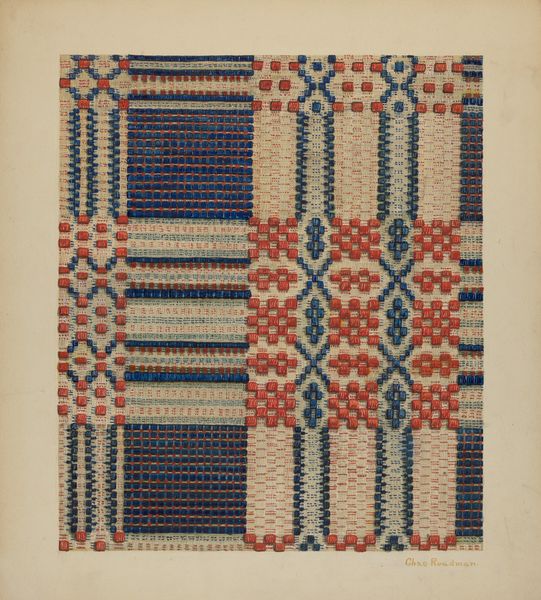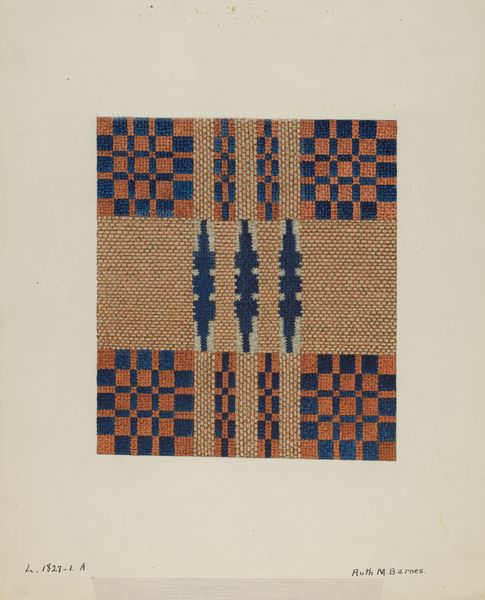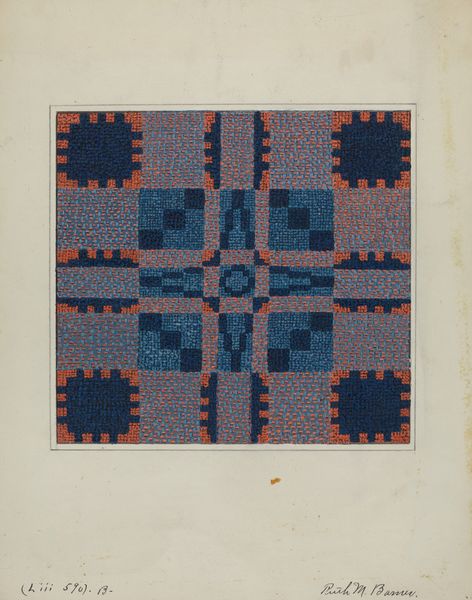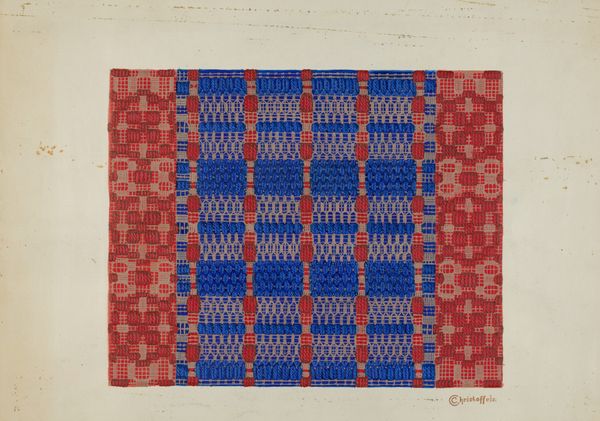
drawing, weaving, textile
#
drawing
#
weaving
#
textile
#
geometric pattern
#
geometric
#
abstraction
#
decorative-art
Dimensions: overall: 27.9 x 35.6 cm (11 x 14 in.) Original IAD Object: 72" square
Copyright: National Gallery of Art: CC0 1.0
Curator: Looking at this piece, I find a certain comforting rhythm in the repeating patterns. Editor: I agree. It’s quite soothing, isn’t it? Almost hypnotic. I wonder about the society that would have found daily utility and artistry intertwined like this. What are we looking at specifically? Curator: We’re viewing a coverlet, or rather, the reverse side of it. This textile work is dated somewhere between 1935 and 1942 and was created by Cornelius Christoffels. Editor: It has a very folksy feel, with its simple, almost naive design. The repetition of these shapes; do you see any deeper symbolic intent, or is this purely decorative? Curator: While seemingly simple, geometric patterns like these often held deeper meaning in textiles. Repetition can signify continuity, and the specific shapes, perhaps stylized representations of natural elements or community symbols. This isn’t just adornment. It reflects cultural memory. I think Christoffels has managed to connect to an older weaving tradition in some way. Editor: That connection is interesting, especially given the socio-economic conditions of the 1930s and 40s. Was this perhaps a revival of older techniques? A commentary on mass-produced goods? Textiles often provide tangible records of cultural identity. Curator: Quite possibly! Textiles in folk art traditions have often acted as both records and reaffirmations of shared beliefs and experiences. To touch something crafted using familiar symbolic arrangements can foster reassurance, a reminder of heritage during uncertain times. Editor: I agree. There is something deeply resonant about these handmade objects. So, from this reverse side of Christoffels' coverlet, we can infer how textiles became intertwined with memory and survival for various groups within society? Curator: Indeed. An object of utilitarian use transformed into a touchstone connecting generations through repeated symbols and a return to traditional methods, and thus reaffirming resilience within the population. Editor: An everyday object imbued with enduring social power. Curator: Exactly.
Comments
No comments
Be the first to comment and join the conversation on the ultimate creative platform.
